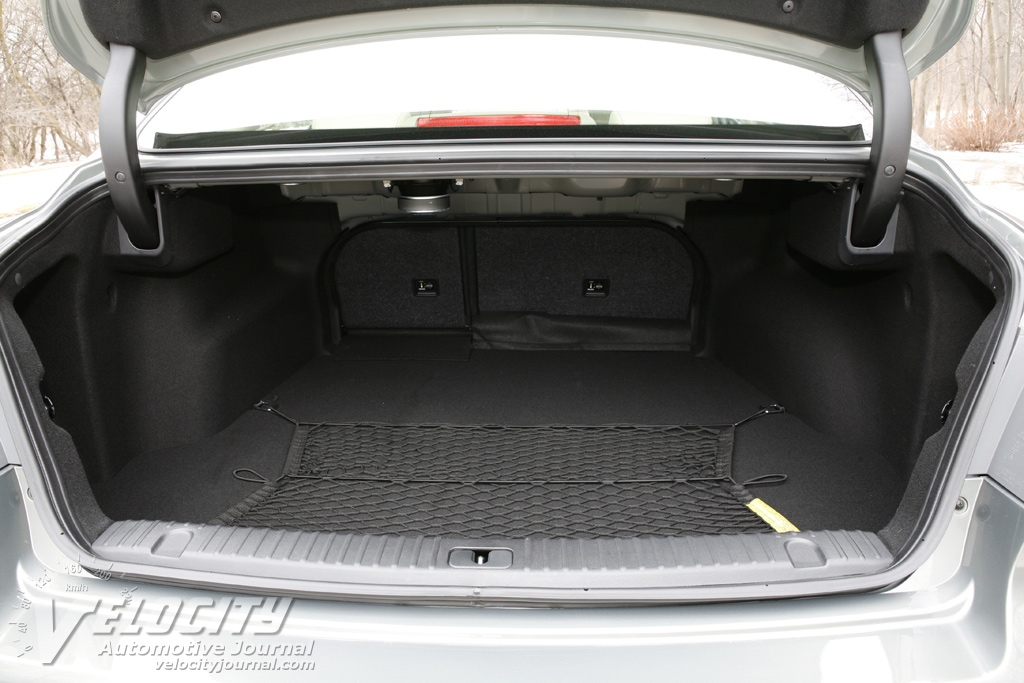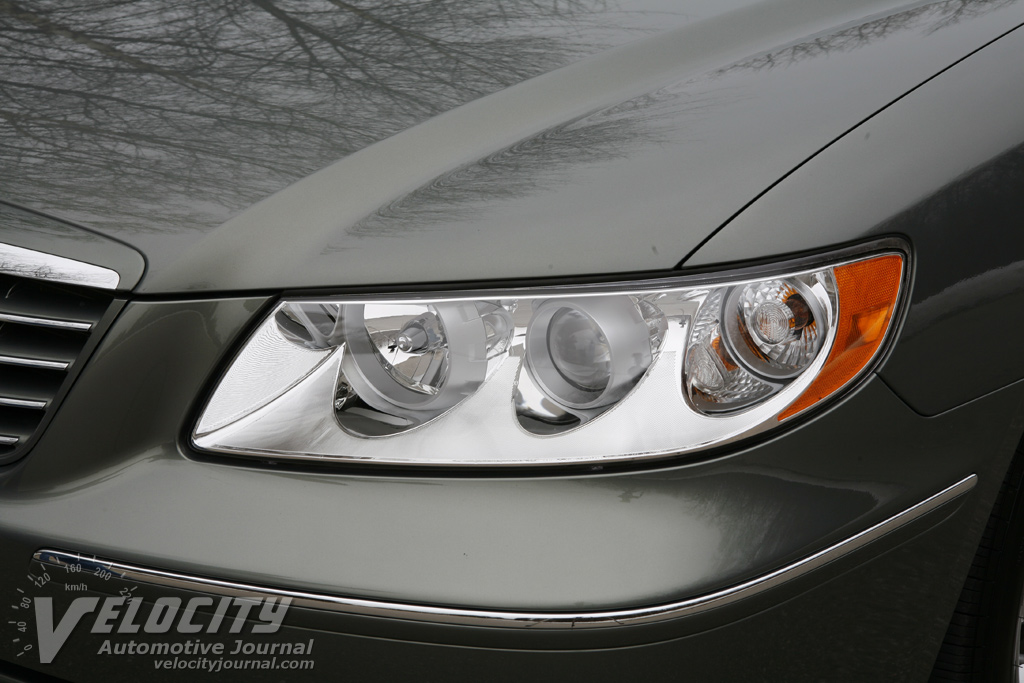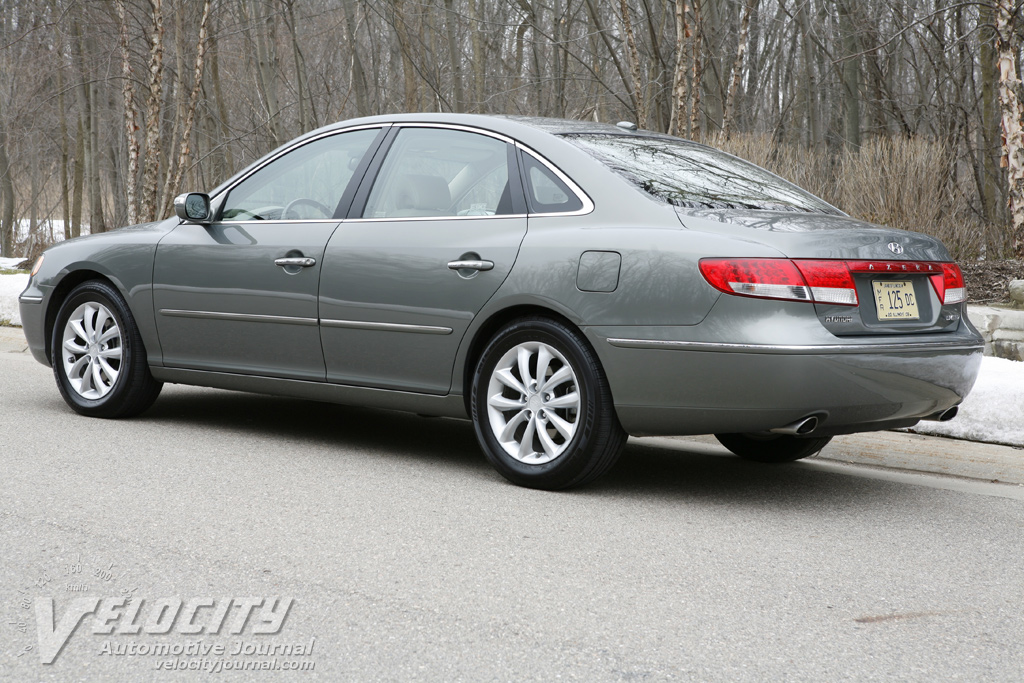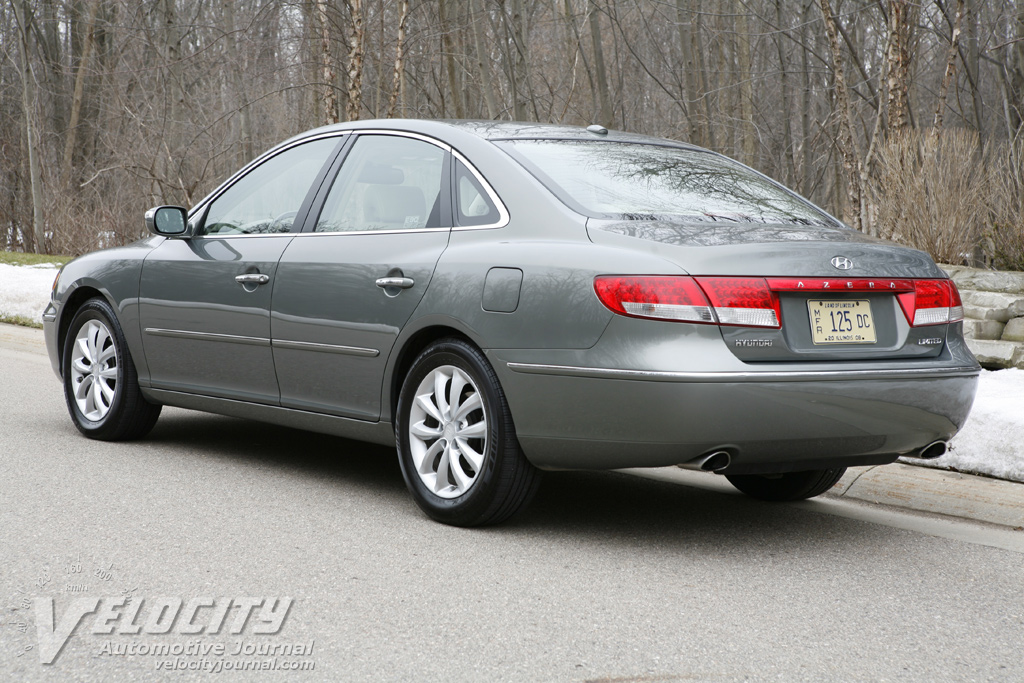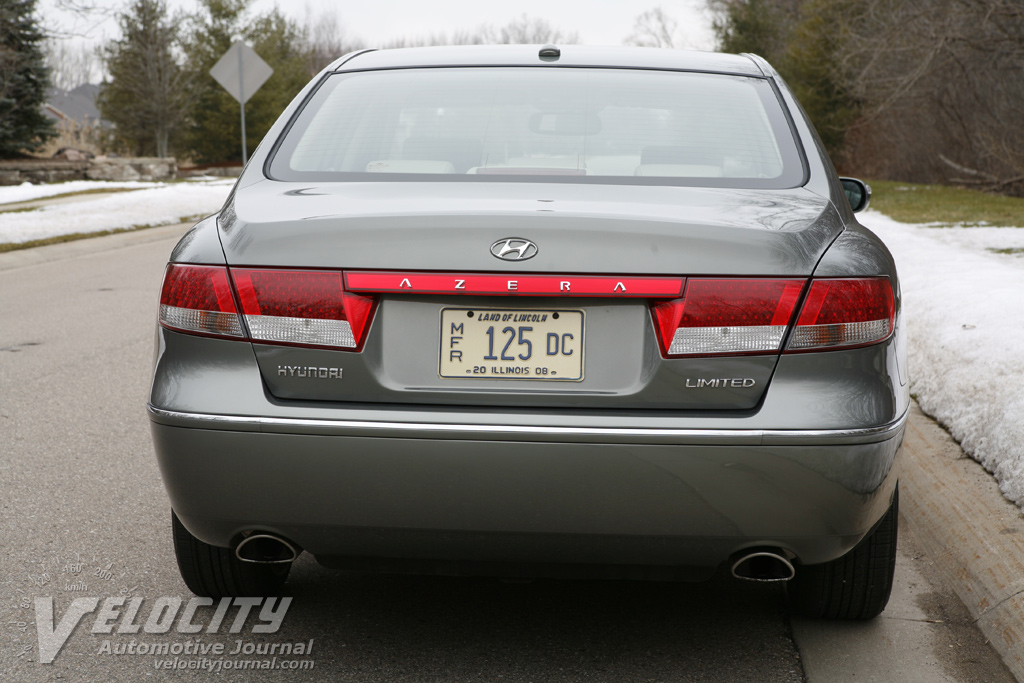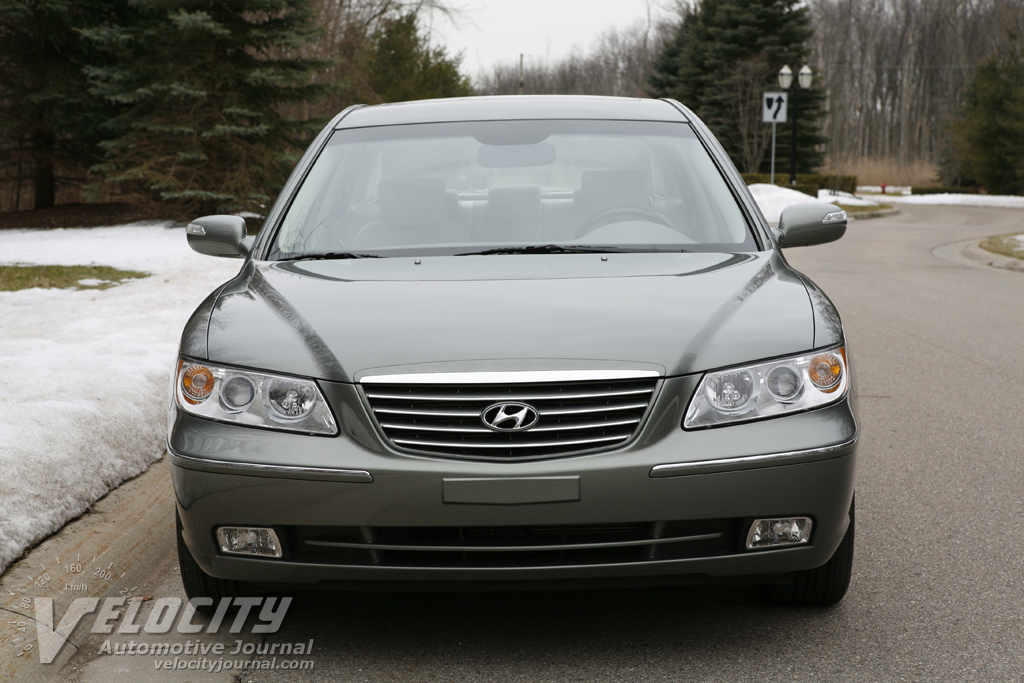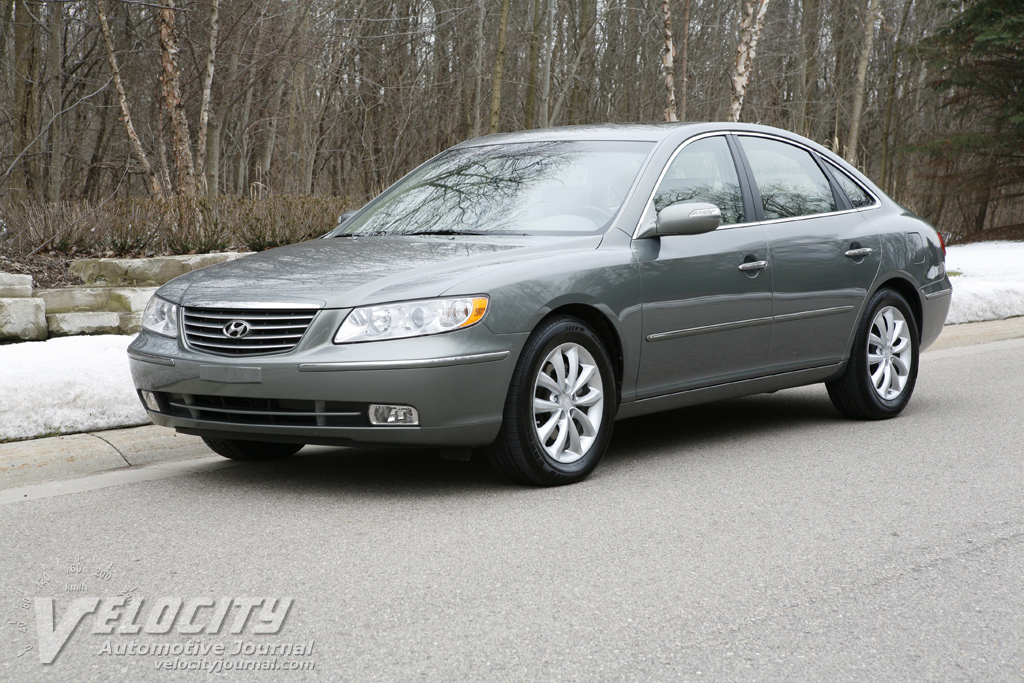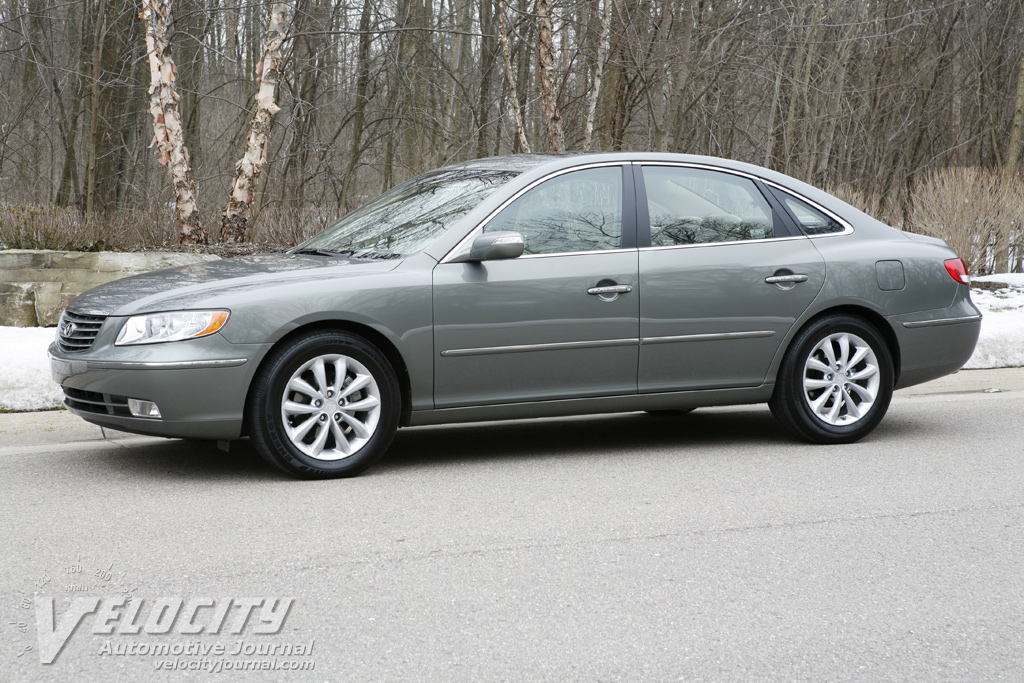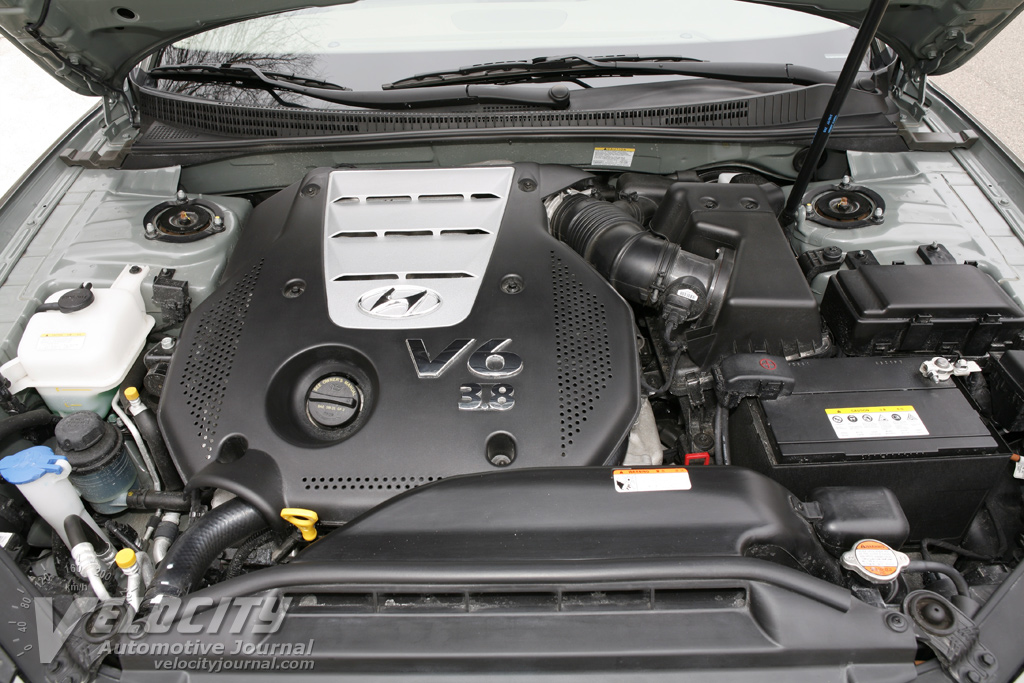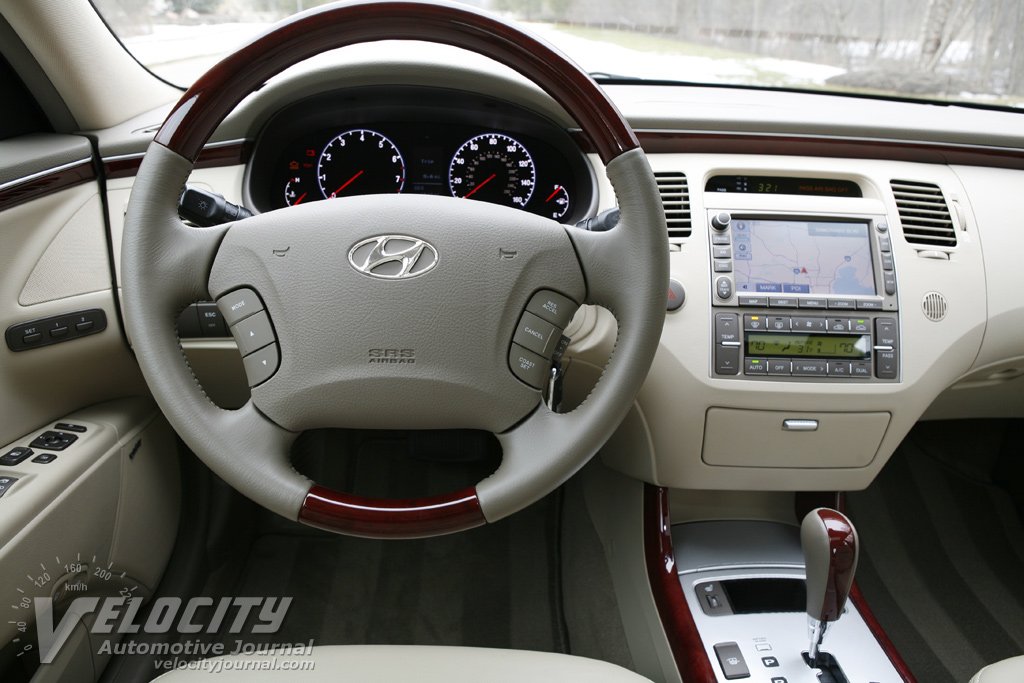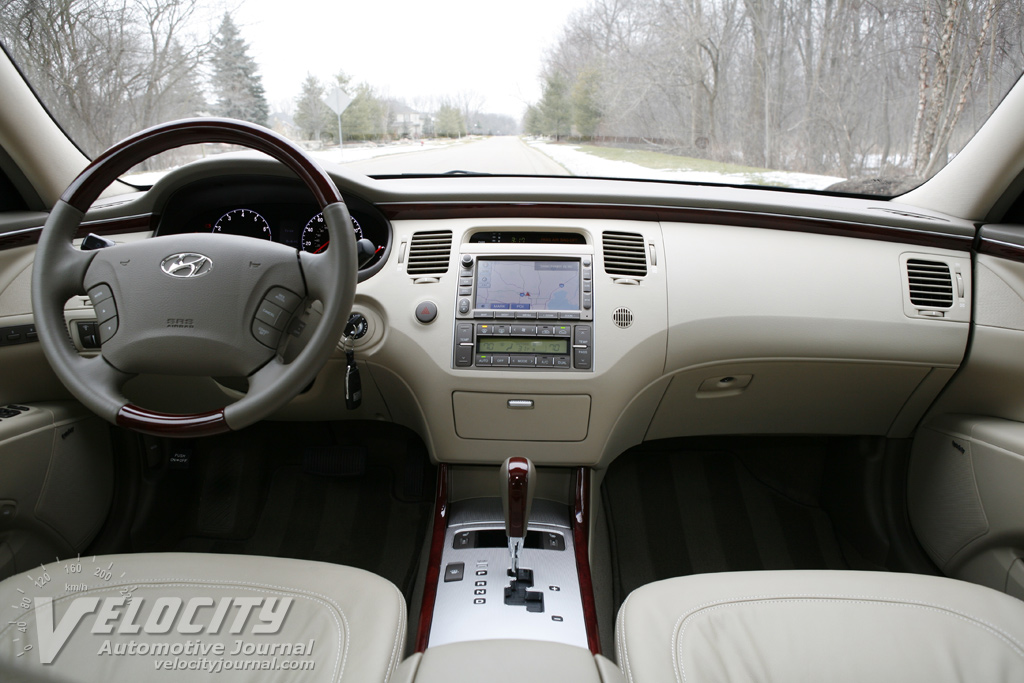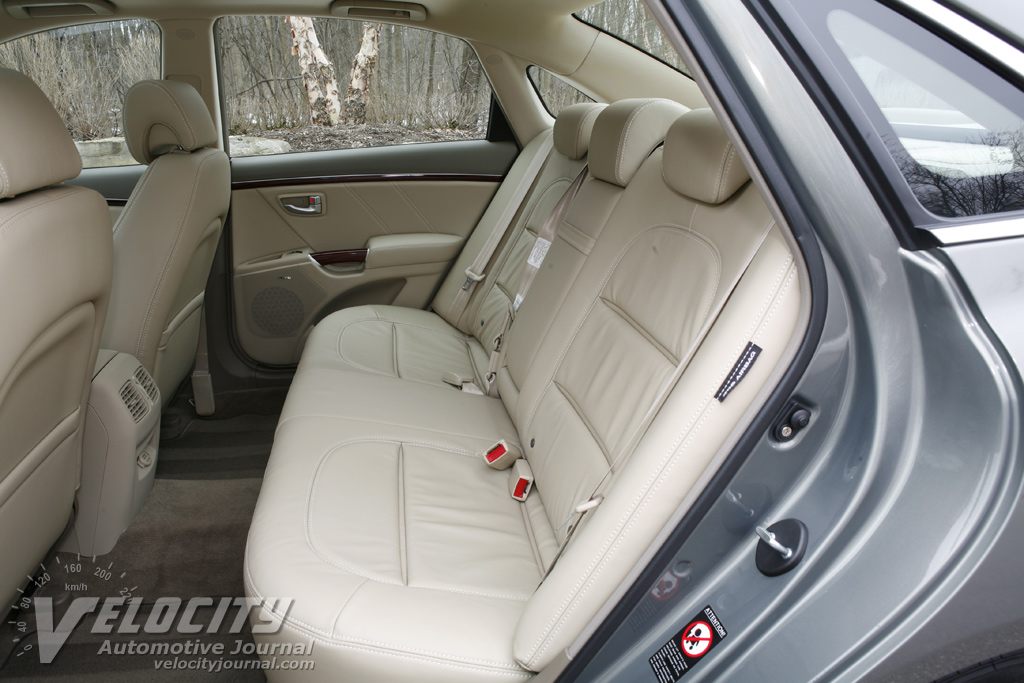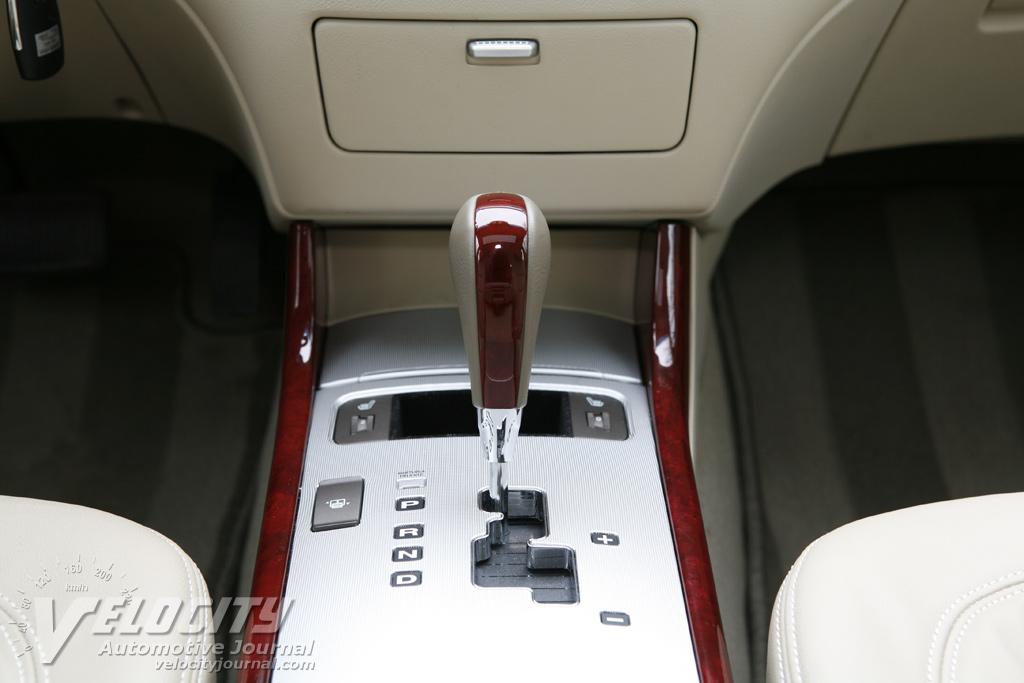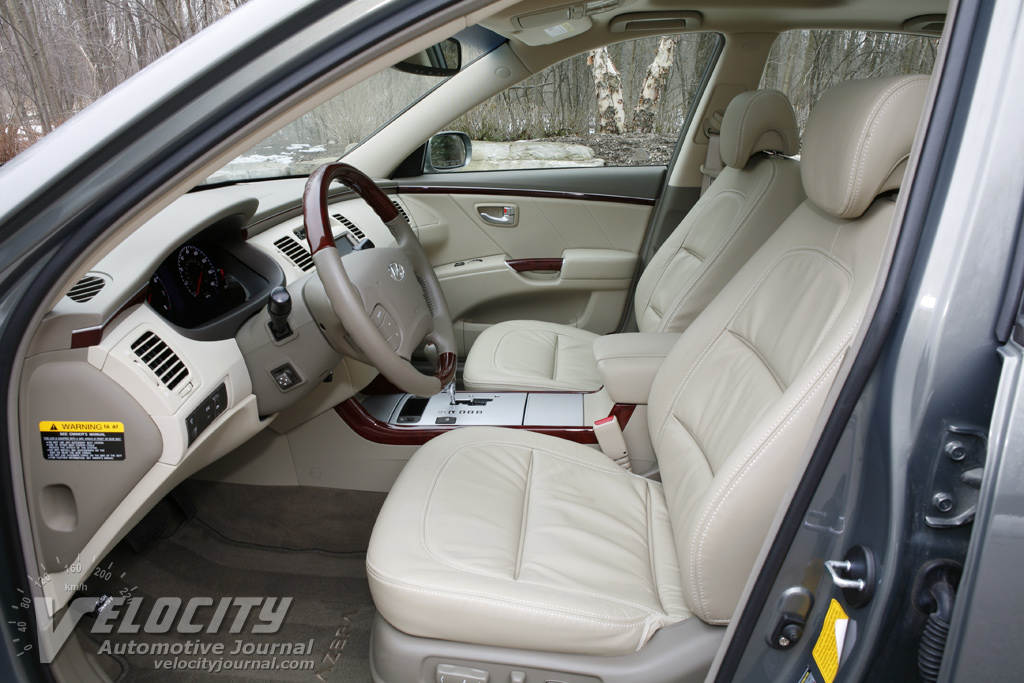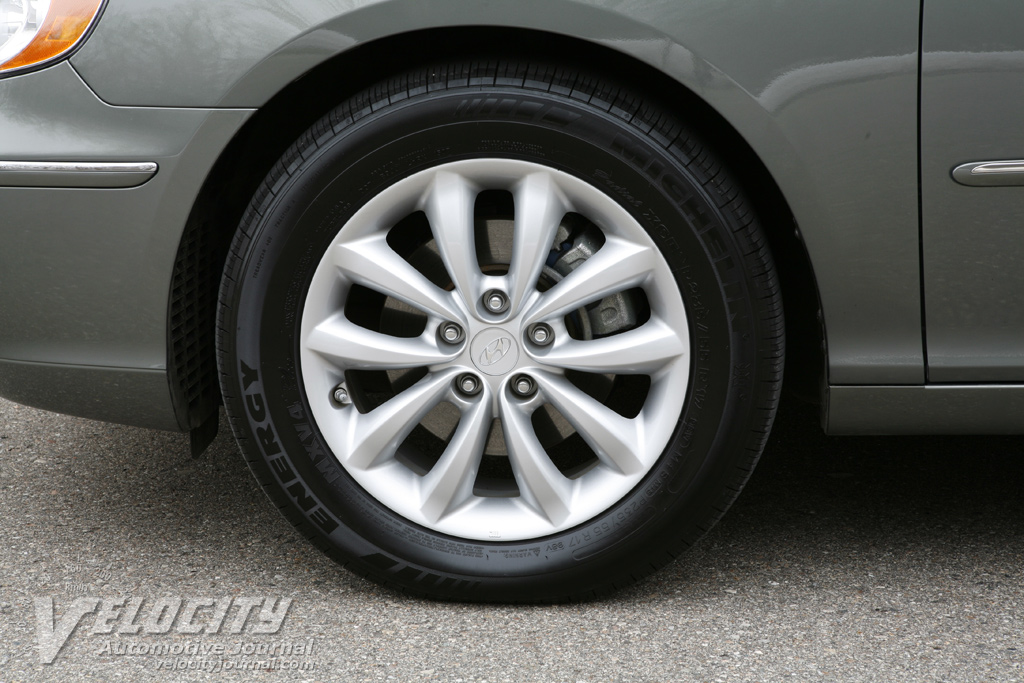2008 Hyundai Azera Limited
03/27/2008
Shahed Hussain
Over the past few years, Hyundai quietly expanded its product lineup to encompass luxury sedans. The first foray into this unfamiliar segment was the forgettable XG300 and XG350 sedans. In 2006, the sleek new Azera took its place as Hyundai's flagship. The Azera serves as an alternative to the Toyota Avalon and Buick Lucerne in the entry luxury segment. As is typical for Hyundai, the Azera boasts a comprehensive set of standard features that set it apart from its more expensive competition.
The Azera is available in two trim levels: GLS and Limited. The lower cost Azera GLS features 3.3L V-6 whereas a 3.8L resides under the hood of the Limited. Both models have a 5-speed automatic transmission. We tested an Azera Limited ($28,550) with the Ultimate Navigation Package ($2,750) and floor mats ($100). The navigation package includes an Infinity audio system, power adjustable steering column, power adjustable pedals, and rain-sensing wipers. The total sticker price was $32,095 including the $695 freight and handling charge.
Hyundai's approach to a luxury sedan interior follows the norm from other Asian manufacturers, with the requisite softly padded leather seats, earth-tone hues of beige and taupe, and semi-realistic simulated wood accents. Much of the interior is of the soft touch variety; a notable exception is the dashboard, which is grained hard plastic. Even so, the Azera's interior design and materials are significantly more upscale and sophisticated than the less expensive Sonata.
Leather and simulated wood cover the steering wheel rim, as well as the transmission shift knob. Audio and cruise control buttons nestle between the steering wheel spokes. The steering column and pedals are both power adjustable to accommodate most drivers. Brightly lit electroluminescent gauges are easily legible day or night. Between the 8,000 RPM tachometer and 160-MPH speedometer is the trip computer display. A multi-function LCD on the center stack controls navigation and audio system functions. The dual-zone climate control has its own monochrome LCD. A mobile phone or other small objects can be stashed in a bin below the climate controls. The heated seat control knobs are located atop the center console. Sunglasses can be stored in an overhead console compartment. Dual cupholders are hidden between the front seats. For additional storage, a large bin sits under the center armrest. The front door pockets conveniently flip out for easy access to the contents.
Korean electronics giant LG supplies the optional navigation system, which features an intuitive, uncluttered interface with available voice guidance. Frequently used functions have dedicated buttons, so the navigation system requires less attention to use while driving. Infinity designed the optional 605-watt Logic 7 audio system for the Azera; the 11-channel, 12-speaker system cranks out superb sound with exceptional treble and tight, accurate bass. The audio system includes CD, XM satellite radio, and mp3 playback capability. Despite its sophistication, the Infinity system has no auxiliary input for external mp3 players.
The Azera's 8-way power adjustable seats are best described as comfortable armchairs, but lacked adequate thigh support. Front headroom is adequate for occupants less than 6-ft. tall, but anyone taller will have to recline the seatback for more clearance. Back seat passengers also get plush, comfortable seats and above average legroom. With two rear seat occupants, the center armrest flips down to reveal dual cupholders. For longer cargo, the 60/40 split folding rear seats allow objects to extend into the passenger compartment. Rear passengers benefit from ventilation ducts and a 12V outlet located behind the center console. A driver-controlled power sunshade keeps backseat passengers cool.
Hyundai equips Azera models with 235/55VR17 tires; our tested Azera Limited wore Michelin MXV4 rubber on 17-inch alloy wheels. The front suspension consists of double wishbones (A-arms), coil springs, twin-tube dampers, and a 27 mm diameter anti-roll bar. At the rear, a multi-link setup includes coil springs, twin-tube dampers, and a 17 mm diameter anti-roll bar. An all-disc brake system includes standard 4-channel/4-sensor ABS, Brake Assist, Electronic Brake-force Distribution, Traction Control, and Electronic Stability Control. Brake feel is slightly spongy, but with no dead spots in pedal travel. We didn't push the Azera hard enough to really test the brakes, but they seemed perfectly adequate for typical driving conditions.
As Hyundai's entry luxury sedan, the Azera's handling is best described as uninvolving. Like most front-drive cars, the Azera exhibits mild understeer in normal driving. The suspension absorbs potholes and frost heaves with no complaints, while the Michelin tires thump quietly over road imperfections. The soft spring and damper settings result in significant acceleration squat and brake dive; moderate body roll reminds the driver that the Azera has no sporting pretensions. Where the Azera shines is in its near silence at freeway speeds; tire and wind noise are almost unnoticeable on concrete or asphalt surfaces. Unfortunately, the Azera tends to wander slightly at speeds above 70 MPH, probably due to the overly boosted, numb steering; reduced assist would likely improve straight-line stability.
Hyundai's biggest V-6, shared with the Veracruz SUV and Entourage minivan, powers the Azera Limited. The 3.8L engine cranks out 263-bhp @ 6,000 RPM, while the 257 lb-ft. torque peak is at 4,500 RPM. This "Lambda" V-6 is exceptionally smooth throughout its rev range; with linear power delivery up to the 6,500 RPM redline. Generous torque below 3,000 RPM ensures that the Azera accelerates briskly from a stoplight; credit the continuous variable valve timing for the extended low-RPM torque. The 5-speed automatic is controlled via a gated shifter. In either manual or automatic mode, the transmission shifts are smooth but unhurried.
The EPA rates the 3.8L V-6 at 17/26 (city/hwy.), which is unexceptional in this class: the slightly lighter Toyota Avalon surpasses the Azera by two MPG in both city and highway ratings. Surprisingly, the smaller 3.3L V-6 in the base Azera GLS offers a minimal one MPG improvement in city fuel economy, and no improvement on the highway. According to Hyundai, both Azera models have identical curb weight (3,629 lbs.) and share the same top gear transmission/final drive ratios, so we were surprised that the 3.3L engine offers a scant fuel consumption advantage.
In its role as Hyundai's current flagship sedan, the Azera is significant step up from the popular Sonata. A refined powertrain and comprehensive luxury features at a reasonable price should attract more affluent customers to Hyundai. However, the Azera offers nothing especially unique to separate it from other entry luxury sedans such as the Toyota Avalon or Buick Lucerne. While a loaded Azera Limited undercuts its competition significantly on price, in the above $30K segment, value alone doesn't guarantee success. Hyundai seems to have understood this dilemma, as the striking new Genesis sedan promises to be a more dynamic successor to the innocuous Azera.


